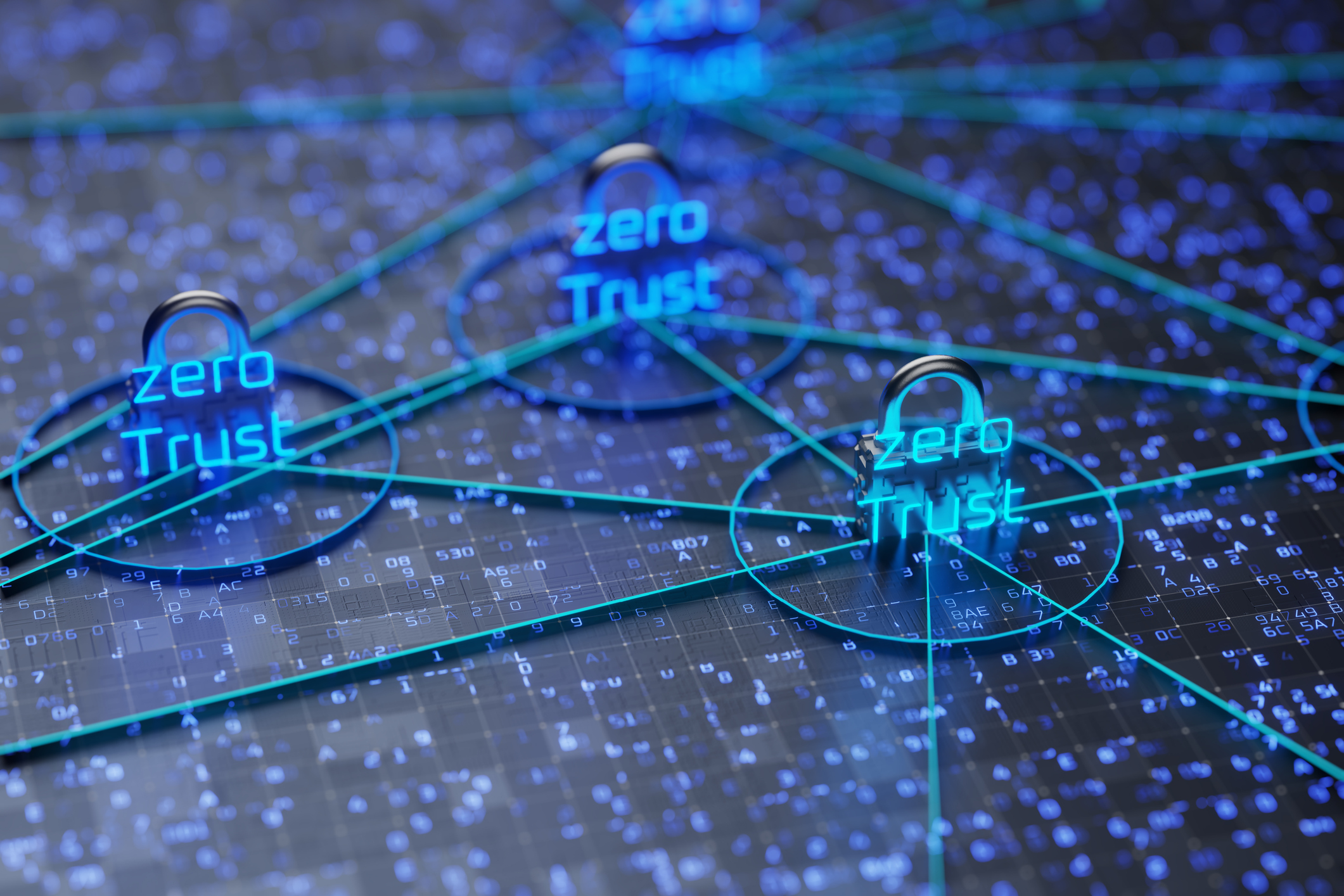As federal agencies adopt cloud-first mandates and hybrid work becomes the norm, the traditional idea of a secure network perimeter no longer applies. Critical systems, identity infrastructure, and data now span multiple environments, including FedRAMP-authorized cloud platforms and mobile endpoints. In this environment, static perimeter-based security models aren’t just ineffective, they introduce risk. Addressing this requires a cybersecurity model grounded in continuous verification, least privilege enforcement, and adaptive access controls. That model is Zero Trust.
Why Traditional Federal Cybersecurity Models Fall Short in 2025
Legacy architectures focused on securing physical data centers and trusted internal networks. Firewalls and VPNs once acted as the gatekeepers, but modern infrastructures are increasingly decentralized. Agencies now manage a mix of cloud services, mobile workforces, and inter-agency collaboration, making it impossible to rely on a fixed Trusted Internet Connection (TIC) model alone.
Despite this evolution, federal agencies still need to uphold the tenets of confidentiality, integrity, and availability (CIA). The challenge is applying these principles in dynamic environments. This shift has prompted frameworks like OMB M-22-09, which mandates federal Zero Trust implementation through measurable maturity outcomes.
What Zero Trust Security Means for Government Agencies
Zero Trust security assumes no actor, system, or connection is trustworthy by default. Each access request must be continuously evaluated based on identity, device health, location, and risk context.
For federal agencies, Zero Trust became a mandate with Executive Order 14028. That order required all agencies to adopt Zero Trust architecture by the end of fiscal year 2024. The Office of Management and Budget (OMB) outlined a national strategy aligned with CISA’s Zero Trust Maturity Model (ZTMM). The model emphasizes granular enforcement across five pillars:
- Identity, Credential, and Access Management (ICAM)
- Endpoint and Device Trust
- Secure Network Infrastructure
- Application Security and Workload Protection
- Data Classification and Encryption
Each pillar is subject to continuous diagnostics and mitigation (CDM) and dynamic policy enforcement based on context,: user behavior, device posture, access time, and location.
Avoiding Fragmentation in Federal Zero Trust Implementation
A common pitfall in agency Zero Trust efforts is deploying tools in isolation, what CISA refers to as “siloed maturity.” For example, implementing endpoint detection without integrating identity-aware proxy enforcement can allow compromised users to retain privileges. Without cross-pillar telemetry, gaps emerge.
Disjointed deployments lead to:
- Delayed mean time to detect (MTTD) and mean time to respond (MTTR)
- Increased total cost of ownership (TCO) across tools
- Inconsistent audit trails and compliance gaps during FISMA reviews
Agencies need unified security telemetry across identity, endpoint, and data layers to meet both OMB timelines and TIC 3.0 policy enforcement capabilities.
Key Questions for Designing Federal Zero Trust Architecture
Before evaluating vendors or solutions, CISOs should conduct a system-level assessment framed around the following:
- Who are the authorized identities accessing systems? (agency staff, contractors, interagency users)
- What types of sensitive workloads are being accessed? (e.g., FOIA documents, law enforcement databases, CUI)
- Where is this data hosted? (FedRAMP High cloud environments, internal enclave systems)
- How should access be monitored and enforced? (via SSO, MFA, real-time session control, device health attestation)
This aligns with CISA’s call to implement Identity Governance and Administration (IGA), continuous risk scoring, and adaptive access policies.
Integrated Security for Federal Environments
Rather than layering point solutions on top of legacy infrastructure, agencies should adopt platforms that natively integrate controls across ZTMM pillars, particularly ICAM, Endpoint Detection and Response (EDR), and Data Loss Prevention (DLP).
Platforms should support:
- Attribute-based access control (ABAC) mapped to NIST 800-53 controls
- FedRAMP-Moderate or High baseline authorization
- Integration with Security Operations Centers (SOCs) and SIEM tools like Wazuh or Elastic Security
A unified Zero Trust platform simplifies policy management and centralizes logging, improving both situational awareness and audit readiness.
How Can Netizen Help?
Founded in 2013, Netizen is an award-winning technology firm that develops and leverages cutting-edge solutions to create a more secure, integrated, and automated digital environment for government, defense, and commercial clients worldwide. Our innovative solutions transform complex cybersecurity and technology challenges into strategic advantages by delivering mission-critical capabilities that safeguard and optimize clients’ digital infrastructure. One example of this is our popular “CISO-as-a-Service” offering that enables organizations of any size to access executive level cybersecurity expertise at a fraction of the cost of hiring internally.
Netizen also operates a state-of-the-art 24x7x365 Security Operations Center (SOC) that delivers comprehensive cybersecurity monitoring solutions for defense, government, and commercial clients. Our service portfolio includes cybersecurity assessments and advisory, hosted SIEM and EDR/XDR solutions, software assurance, penetration testing, cybersecurity engineering, and compliance audit support. We specialize in serving organizations that operate within some of the world’s most highly sensitive and tightly regulated environments where unwavering security, strict compliance, technical excellence, and operational maturity are non-negotiable requirements. Our proven track record in these domains positions us as the premier trusted partner for organizations where technology reliability and security cannot be compromised.
Netizen holds ISO 27001, ISO 9001, ISO 20000-1, and CMMI Level III SVC registrations demonstrating the maturity of our operations. We are a proud Service-Disabled Veteran-Owned Small Business (SDVOSB) certified by U.S. Small Business Administration (SBA) that has been named multiple times to the Inc. 5000 and Vet 100 lists of the most successful and fastest-growing private companies in the nation. Netizen has also been named a national “Best Workplace” by Inc. Magazine, a multiple awardee of the U.S. Department of Labor HIRE Vets Platinum Medallion for veteran hiring and retention, the Lehigh Valley Business of the Year and Veteran-Owned Business of the Year, and the recipient of dozens of other awards and accolades for innovation, community support, working environment, and growth.
Looking for expert guidance to secure, automate, and streamline your IT infrastructure and operations? Start the conversation today.



